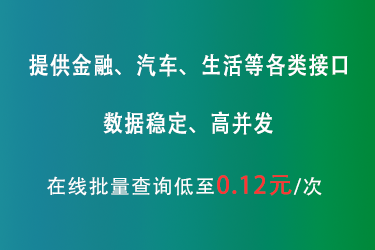当前位置:
首页 >
科技热点 >
二零一二年巴西Labor force with basic education, female (% of female working-age population with basic education)为55.425,突破历史最高
二零一二年巴西Labor force with basic education, female (% of female working-age population with basic education)为55.425,突破历史最高
2024-04-28 来源:wapi.cn Labor
force
with
basic
education
female
female
work
g-age
population
with
basic
education
巴西
Brazil
BRA
中高等收入国家
拉丁美洲与加勒比海地区(不包括高收入)
【版权声明】该文章由挖数据整理发布,如需转载请注明出处。
根据世界银行2023年12月19日发布该国Labor force with basic education, female (% of female working-age population with basic education)数据,巴西,作为中高等收入国家在Labor force with basic education, female (% of female working-age population with basic education)2012年该值最高55.425,2020年该值最低30.576,经过8年的变化,文章关键词识别就从2012年的55.425降到2020年30.576
它是拉丁美洲与加勒比海地区(不包括高收入)国家;在经济领域,拉美地区国家在贸易活动中“去美元化”,使用地区共同货币的尝试更加活跃;锂储量巨大的南美“锂三角”玻利维亚、智利、阿根廷与墨西哥积极寻求合作;推动“去美元化”的巴西、阿根廷、玻利维亚将目光转向人民币。
拉丁美洲与加勒比海地区(不包括高收入)同时期的玻利维亚的数据显示,巴西2012年的最高点与玻利维亚对比。高出10.362 %。玻利维亚的同年数据显示为51.427,低于40.54个百分比(%)。
关于巴西的Labor force with basic education, female (% of female working-age population with basic education)数值
| 年份 | 数值 |
|---|---|
| 1989年 | 50.928 |
| 1990年 | 51.329 |
| 1992年 | 51.847 |
| 1995年 | 49.772 |
| 1996年 | 48.353 |
| 1997年 | 48.811 |
| 1998年 | 49.581 |
| 1999年 | 50.799 |
| 2001年 | 51.825 |
| 2002年 | 53.339 |
| 2003年 | 53.065 |
| 2004年 | 54 |
| 2005年 | 54.656 |
| 2006年 | 54.213 |
| 2007年 | 53.266 |
| 2008年 | 52.312 |
| 2009年 | 52.715 |
| 2011年 | 48.095 |
| 2012年 | 55.425 |
| 2013年 | 54.825 |
| 2014年 | 54.439 |
| 2015年 | 50.216 |
| 2016年 | 37.048 |
| 2017年 | 37.238 |
| 2018年 | 36.865 |
| 2019年 | 36.326 |
| 2020年 | 30.576 |
| 2021年 | 32.392 |
| 2022年 | 33.358 |
表格1
- 一九九四年波斯尼亚和黑塞哥维那二氧化碳强度2.202创历史新低
- 波斯尼亚和黑塞哥维那2020年社会缴款为41.1174,突破历史最高
- 二零二一年波斯尼亚和黑塞哥维那农业用地面积为2.26万,成为历史最高点
- 玻利维亚Educational attainment, Doctoral or equivalent, population 25+, male
- 二零一零年不丹对国内经济其他部门的债权较2009年23.9537增长73.6%
- 不丹2010年初婚年龄是18岁的妇女为25.8,成为历史最高点
- 不丹1977年女童五年级持续就学率13.9242创下新低
- 百慕大2012年居民最终消费支出下降至31.1亿,跌破以往
- 贝宁2020年净国外收入-1.63亿创下新低
- 一九八二年伯利兹比利时来自DAC捐助国的双边援助净流量为6万,突破历史最高
- 伯利兹Unemployment, youth total (% of total labor force ages 15-24) (national estimate)
- 一九六八年比利时Total fisheries production (metric tons)为6.82万,突破历史最高
- 白俄罗斯2021年货物和服务税收达到155.85亿,突破以往任何一年
- 二零二零年白俄罗斯Net incurrence of liabilities, total (current LCU)较2019年29.32亿增长85.44%
- 巴巴多斯2005年对国内经济其他部门的债权较2004年14.7703增长18.55%
- 巴巴多斯2017年经过培训的女性初等教育教师较2016年82.2945增长14.12%
- 一九九五年孟加拉国从南亚地区发展中经济体的商品进口达到17.7187,突破以往任何一年
- 巴林1982年小学男生总入学率84.1394创下新低
- 一九八零年巴哈马Population ages 15-19, female (% of female population)为11.895,突破历史最高
- 二零一七年巴哈马再分配收入,其它行业,支付达到2.66亿,突破以往任何一年
- 马山局村委会(141124)
- 麦洼村委会(141124)
- 闫家山村委会(141124)
- 许家峪村委会(141124)
- 东刘家沟村委会(141124)
- 官道峡村委会(141124)
- 彩树岭村委会(141124)
- 天洪村委会(141124)
- 下冯家山村委会(141124)
- 马家山村委会(141124)
- 郭家山村委会(141124)
- 杨家山村委会(141124)
- 郭家塔村委会(141124)
- 丛罗峪村委会(141124)
- 堡则峪村委会(141124)
- 小王家塔村委会(141124)
- 瓦窑塔村委会(141124)
- 刘家山村委会(141124)
- 大王家塔村委会(141124)
- 柏岭集村委会(141124)
- 麻塔村委会(141124)
- 杨家坡村委会(141124)
- 大王家庄村委会(141124)
- 南塔村委会(141124)























